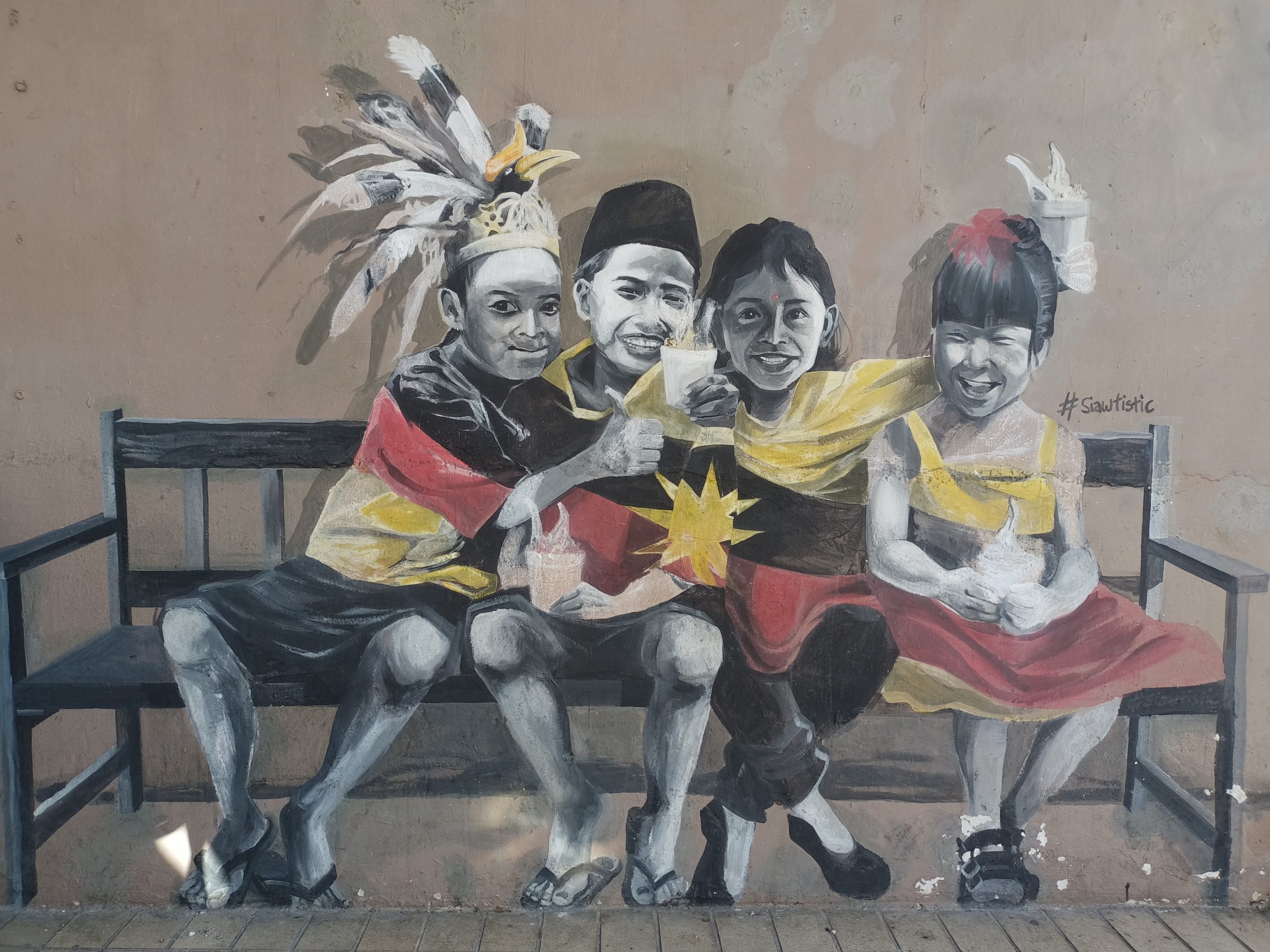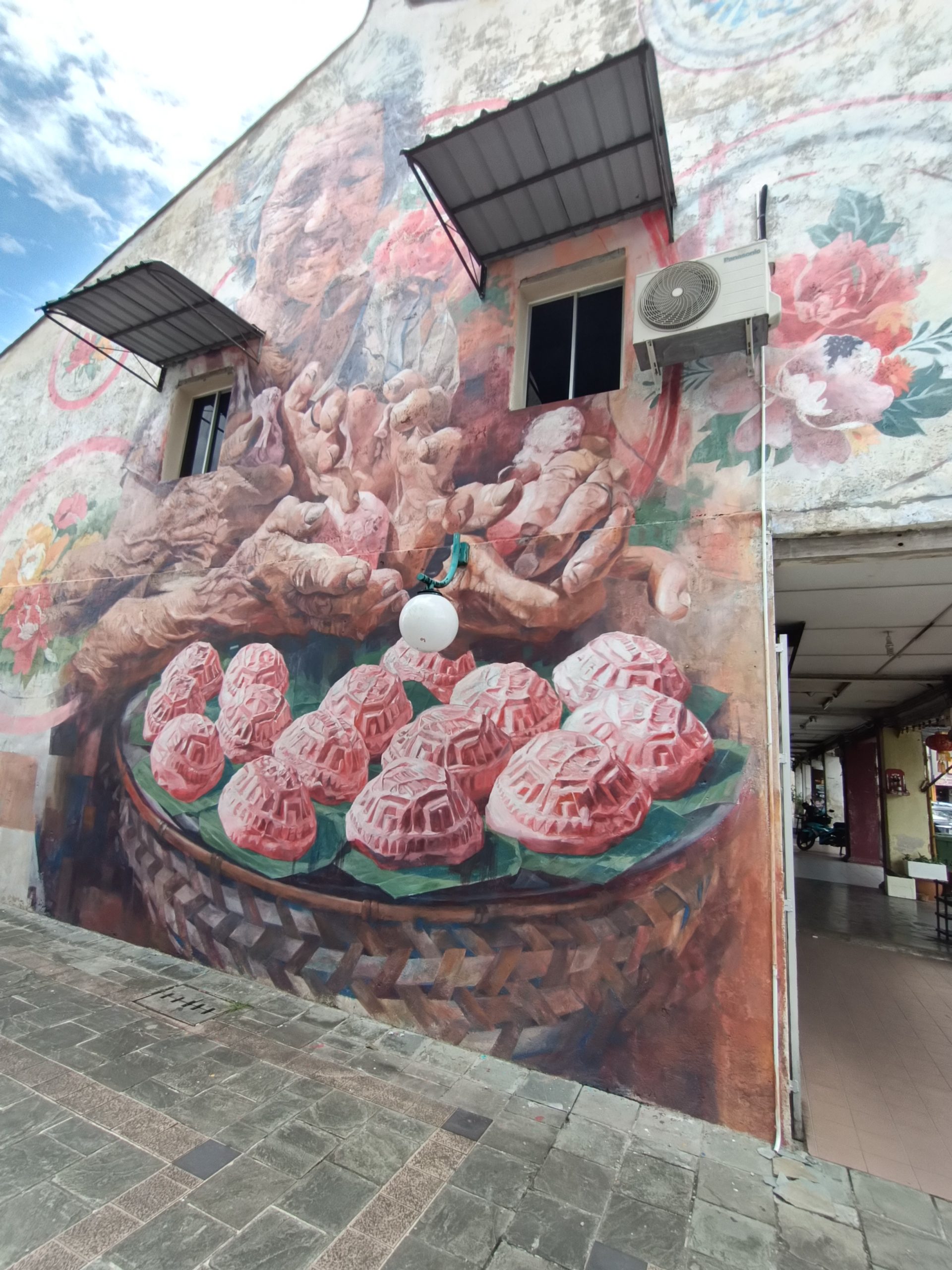By Michael Lee
In the past, graffiti and wall paintings, or street murals, were once viewed as acts of vandalism. But attitudes have changed.

Unity and Cultural Diversity Mural at Open Air Market painted by local artist Leonard Siaw
What started as spontaneous, sometimes illegal activities, these street murals have gained popularity.
These street murals are now part of Kuching’s tourist routes. Local governments and private sectors are investing in various urban art forms to encourage these activities, while the local communities are now appreciative of such creative expressions.
In recent years, Kuching has transformed into a hub of cultural and artistic expression and is showcased through its vibrant street art scene.
Street Walls Turn Canvasses
Kuching City has transformed into a hub of cultural and artistic expression in recent years. This is reflected in the city’s vibrant street art scene. The city’s walls have become a canvas for local artists and community groups to express their creativity and promote cultural awareness and diversity through street murals.
These street arts have indeed gained popularity. Entire walls and streets have undergone a transformation from plain grey to vibrant, eye-catching paintings.
A City Rich in Cultural Diversity
Besides serving as visual representations of the city’s cultural heritage, street arts are testament to the rich cultural diversity of the community. They depict various aspects of the community’s cultural heritage and history. Many of these street arts depict arts of the early merchants, crafts and trades, traditional gastronomy, local legends, and historical events. To see them in person is akin to taking a trip down memory lane or revisiting their childhood.
The murals painted by local mural artists are excellent examples of how Kuching’s street art connects heritage buildings with historical images of the city’s inhabitants. The artworks evoke a sense of Kuching’s pastoral era, preserving the shared identities of the city’s residents and reflecting the way of life then and now along Kuching’s old streets.
One notable example of a street mural in Kuching that promotes cultural heritage is the mural painted by our local muralist, Leonard Siaw. The mural is located in Kuching’s Chinatown along Jalan Padungan and features an 80-year-old artisanal kueh maker, Goh Bing Choo, renowned for her traditional Ang Ku Kueh (Red Tortoise Cake).

The mural of local ang ku kueh maker by Leonard Siaw located opposite the Pandungan Police Station, Kuching
This vibrant mural showcases the local community’s rich cultural heritage and highlights the importance of passing on traditional skills and values to future generations.
Street Murals for Cultural and Heritage Preservation
Street murals in Kuching City, which serve as a visual reminder of the community’s cultural heritage, also help to keep the city’s traditions alive for future generations. The use of vibrant colours and intricate designs in street murals also adds a sense of authenticity and helps preserve the community’s cultural heritage.
These murals add value to the neighbourhoods and are meant to tell stories, connect communities, and remind us of how far we have come as a nation, and what this offer to present and future generations.
When communities take to social media platforms to express their views and opinions on street murals, it fosters a sense of community and belonging and encourages them to take pride in their cultural heritage.
Cultural Heritage and Nation Building Through Street Murals
The late, great Nelson Mandela once said: “Our rich and varied cultural heritage has a profound power to help build our nation.”
The presence of street murals actively promotes cultural diversity by showcasing the cultural heritage of different communities within a single public space. These fosters understanding and respect for cultural diversity while instilling a sense of community and belonging among the residents.
For example, at the Kuching Open Air Market, Leonard Siaw’s mural painting on ‘Different Cultures, Same Ice Cream’ features four children of various Sarawak ethnicities, dressed in clothes that form the Sarawak flag. They are depicted sitting on a bench, relishing ice creams topped with caramelized palm sugar.
This artwork is a powerful representation of the unity, peace, harmony, and cohesive relationship that exists within the community in Sarawak.
It is evident that street murals in Kuching can be effective instruments and platforms for enhancing our cultural heritage and identity. Their visual representation of the community’s cultural heritage and diversity, not only helps preserve cultural traditions but also fosters a sense of community and belonging among Kuching residents. It plays a pivotal role in reflecting Kuching’s cultural identity and artistic expressions and ensures that tangible and intangible cultural elements are passed from one generation to the next.
With the support of local councils and communities, it is hoped that the tradition of street murals in Kuching will continue to thrive, serving as a valuable tool for promoting cultural heritage and diversity.
Michael Lee is a lecturer in Graphic Design at the Faculty of Business, Design and Arts. Michael has completed industrial projects in partnership with corporate companies, NGOs, and the Sarawak government, and has served as a committee member for Sarawak’s 50th Golden Anniversary logo competition. Michael can be contacted at mlee@swinburne.edu.my

